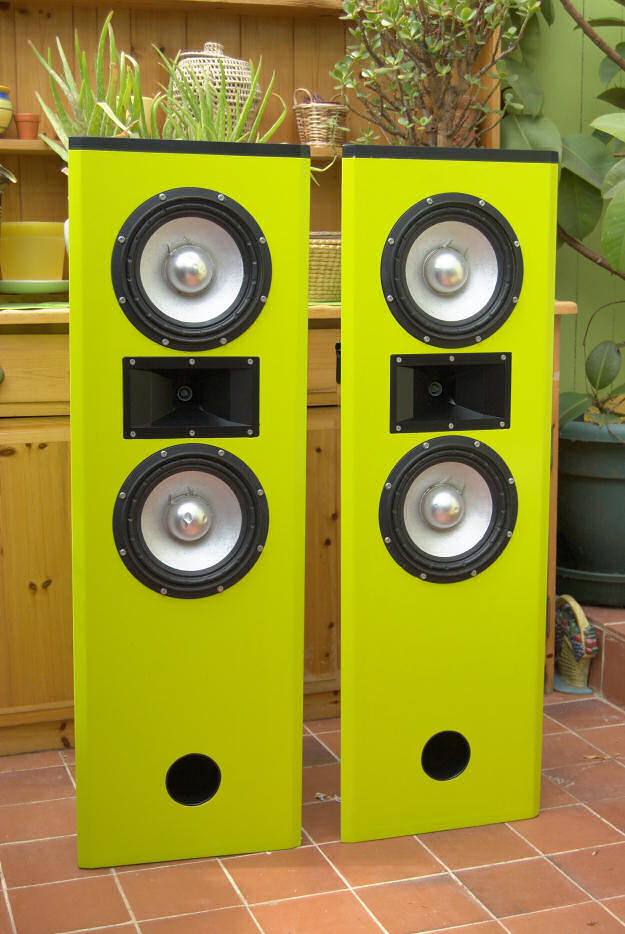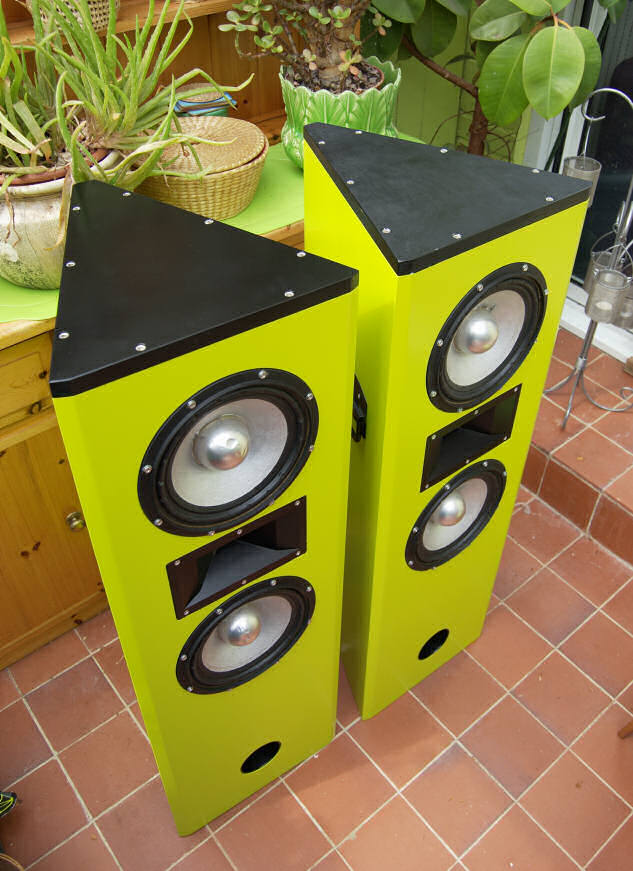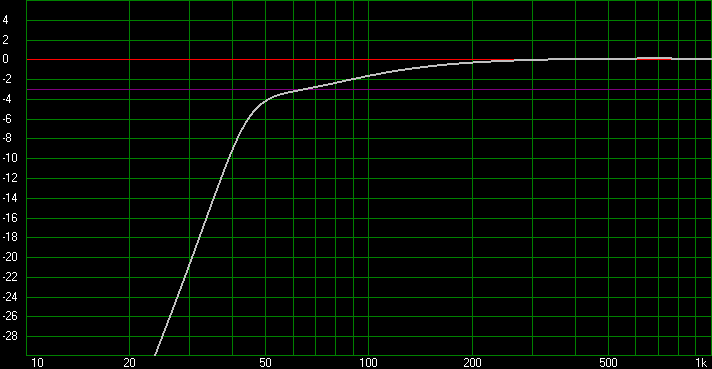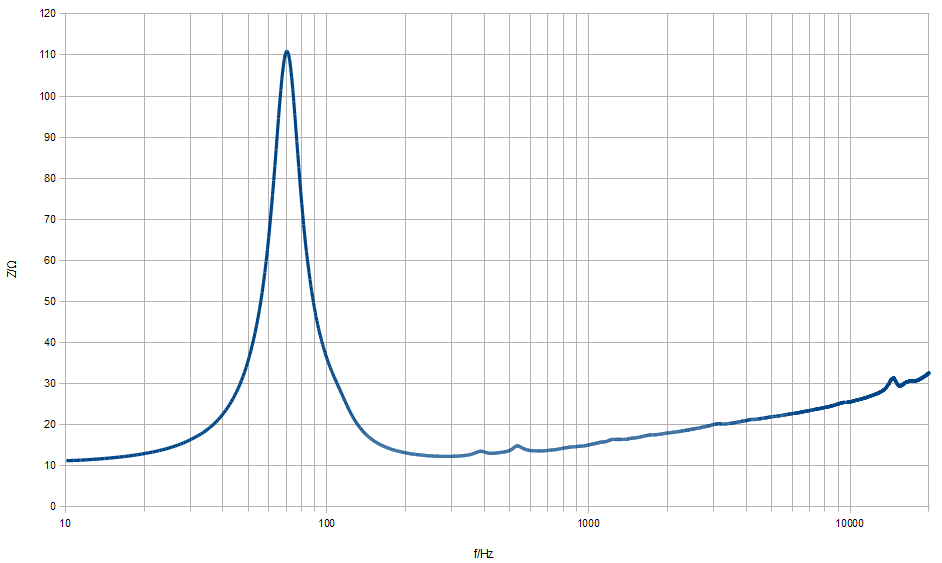Lime Prisms
There were various unrelated bits and bobs that I have had lying around for many years, and I thought it was about time I put them to use. These included: four Celestion SR1 full range drivers; a pair of Eminence APT-150 horn tweeters; enough polypropylene capacitors and inductors for a passive crossover; lots of MDF from when I recently made a horn subwoofer. We needed a pair of speakers for use in the garden now that the weather is better, for parties and stuff - the aforementioned components are suitable for this.

The top panels are removable to allow access to the crossovers (I intend to convert them to active crossovers, but I don't have enough parts to make four amplifiers at the moment). In the photos, one top panel looks dull because I haven't put the final coat of paint on it yet. There are handles on the sides because they are too bulky (1m tall) and heavy to move otherwise.

Following is a picture of what WinISD thinks the bass response should look like. The port is tuned to 50Hz, giving an extended but sloping bass response. If I had used a normal alignment to give a flat frequency response then they would have needed a subwoofer, but like this it's possible to use them alone.

And finally, here's the measured Thiele-Small parameters and an impedance graph for the woofers. I couldn't find any such information on these drivers anywhere, so perhaps this will be useful to someone.
| Re | 11.0Ω | |
|---|---|---|
| Le | 0.5mH | |
| Sd | 22.7x10-3m2 | |
| Fs | 70Hz | |
| Qms | 4.3 | |
| Qes | 0.50 | |
| Qts | 0.45 | |
| Vas | 15.7l |

They are full-range drivers and so they could have been used on their own, but the addition of the tweeters helps them to reach past 10kHz. The finished speakers sound quite bright because of the much higher efficiency of the tweeters, despite the padding I added. They sound about right when listened to off-axis though. As expected, the bass is not so impressive by default, but with a little EQ they fill out nicely. The main thing is that they are quite efficient and very robust, so they will survive outside, including when it rains, as long as it's not too heavy before we escape inside.
They are totally unoptimized because of the mish-mash of parts, but I'm pleased with them because they were constructed entirely from parts I already had, meaning that the cost was effectively 0 (apart from the lovely green and black paint, which I bought especially for these speakers).